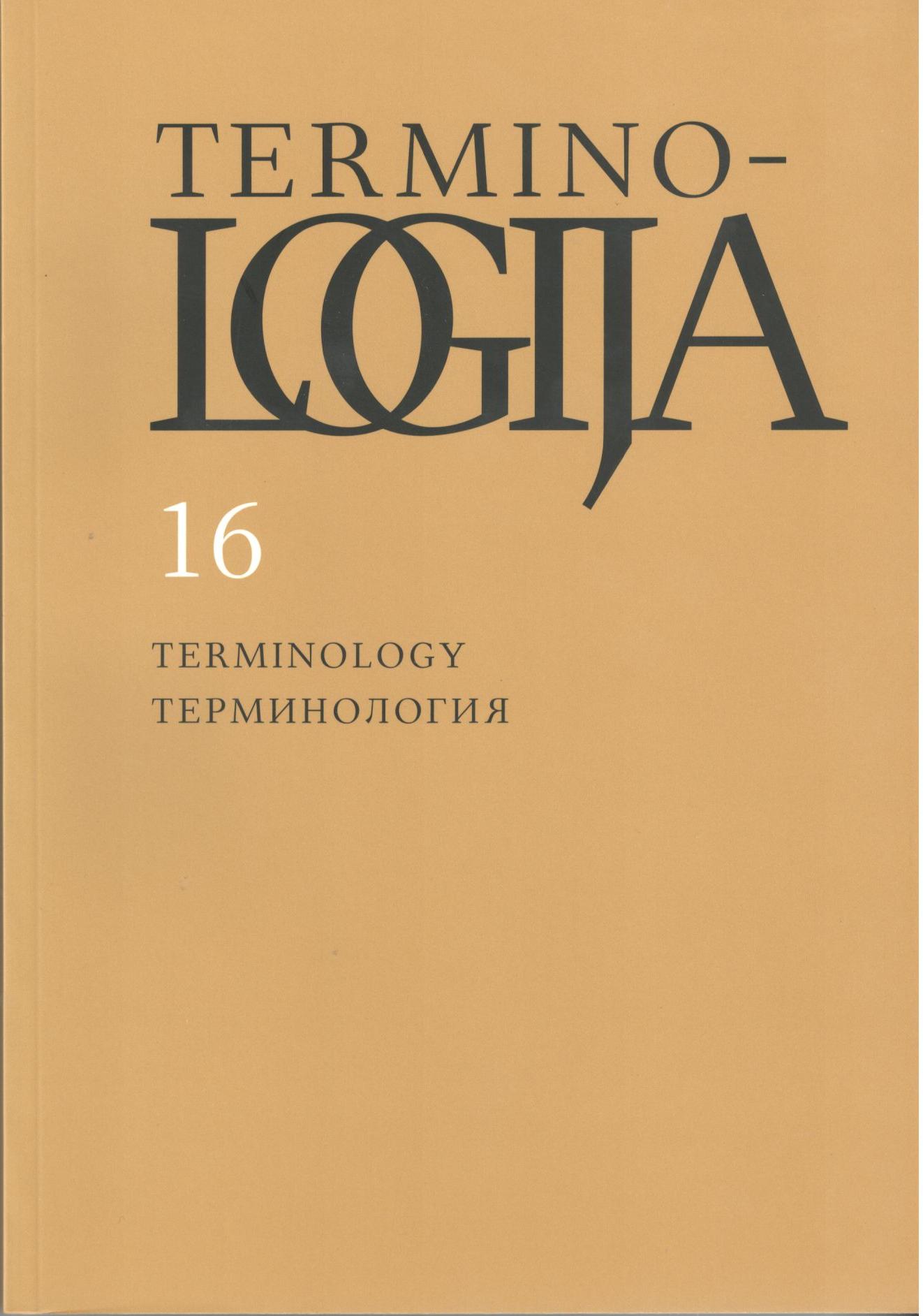Lietuvių ir latvių augalų vardai Aplinkos apsaugos žodyne EnDic2004
Lithuanian and Latvian plant names in the environmental dictionary EnDic2004
Author(s): Solvita LabanauskienėSubject(s): Language and Literature Studies, Lexis, Descriptive linguistics, Baltic Languages, Environmental interactions, Philology
Published by: Lietuvių Kalbos Institutas
Keywords: botanical nomenclature; plant names; names of plant genera; names of plant species;
Summary/Abstract: The article deals with botanical nomenclature of the Baltic languages. It analyses more than 300 Lithuanian and Latvian names of plant genera and over 430 names of species taken from the Environmental Dictionary EnDic2004 in nine languages which was published in 2004 by the Finnish Environment Institute. Plant names are analysed in respect of origin and word-formation. An attempt is made to establish similarities and differences of the Lithuanian and Latvian names of plant genera and species. Lithuanian and Latvian names of plant genera from EnDic2004 are one-word names, but they have different expression. Lithuanian names of plant genera meet the requirements of the International Code of Botanical Nomenclature (ICBN) – they are presented in nominative case in singular. Latvian genera of plants are presented in the nominative case in plural. Lithuanian and Latvian names of plant genera were divided into two groups: names irresolvable in respect of derivation and word-formations. Some names irresolvable in respect of derivation were inherited from Indo-European (Lith. beržas – Latv. bērzi (birch)), Baltic-Slavic (Lith. liepa – Latv. liepa (lime)) or purely Baltic (Lith. apynys – Latv. apinis (hop)) vocabulary and they are common for both Lithuanian and Latvian languages. Another rather small group is comprised of old borrowings taken from Finnic (Lith. kadagys – Latv. kadiķi (juniper)), Slavic (Lith. mėta – Latv. mētra (mint)) and Germanic languages (Lith. vikis – Latv. vīķis (vetch)). Both languages have also borrowed may more names from Latin (Lith. lobelija – Latv. lobēlija (lobelia)). There are more such borrowings in Latvian than in Lithuanian. The majority of Lithuanian and Latvian names of plant genera presented in EnDic2004 are derivates or compounds. The most productive way of name creation is suffixation in Lithuanian and compounding in Latvian. The most productive suffixes are -enis (bruknenis (azalea)), -enė (gebenė (ivy)) in Lithuanian and -enis (tītenis (bindweed)), -ene (gandrene (crane’s-bill)) in Latvian. In both languages diminutive suffixes are popular: -ytė (barborytė (wintercress)), -utis (barškutis (yellow-rattle)), -utė (medutė (may lily)), -ėlis (katilėlis (bellflower)) and -ėlė (ramunėlė (camomile)) in Lithuanian; -iņš (āboliņš (clover)), -iņa (žagatiņa (may lily)), -ītis (cīrulītis (corydalis)) and -īte (atraitnīte (pansy)) in Latvian. A specific characteristic of Latvian suffixation is the usage of two suffixes -en- + -īte (ziepenīte (milkwort)). In both languages compounds are frequent, but prefixation is rare. Lithuanian and Latvian names of species have similarities and differences. Most frequently a specific component of the name of species in both languages is an adjective. Specific components of Lithuanian names of species are expressed in definite adjectives (paprastoji rykštenė (goldenrod)), adjectives with the suffix -inis (pievinis katilėlis (spreading bellflower)) and compound adjectives (įvairialapė usnis (heterophyllous thistle)). Specific components of Latvian names of species are expressed in definite adjectives (mazais ūdenszieds (common duckweed)) and in the genitive of a noun (kalnu priede (dwarf mountain pine)). In Lithuanian the genitive of a noun is used rarely – only when the specific component of the name of species is a personal name.
Journal: Terminologija
- Issue Year: 2009
- Issue No: 16
- Page Range: 93-114
- Page Count: 22
- Language: Lithuanian

